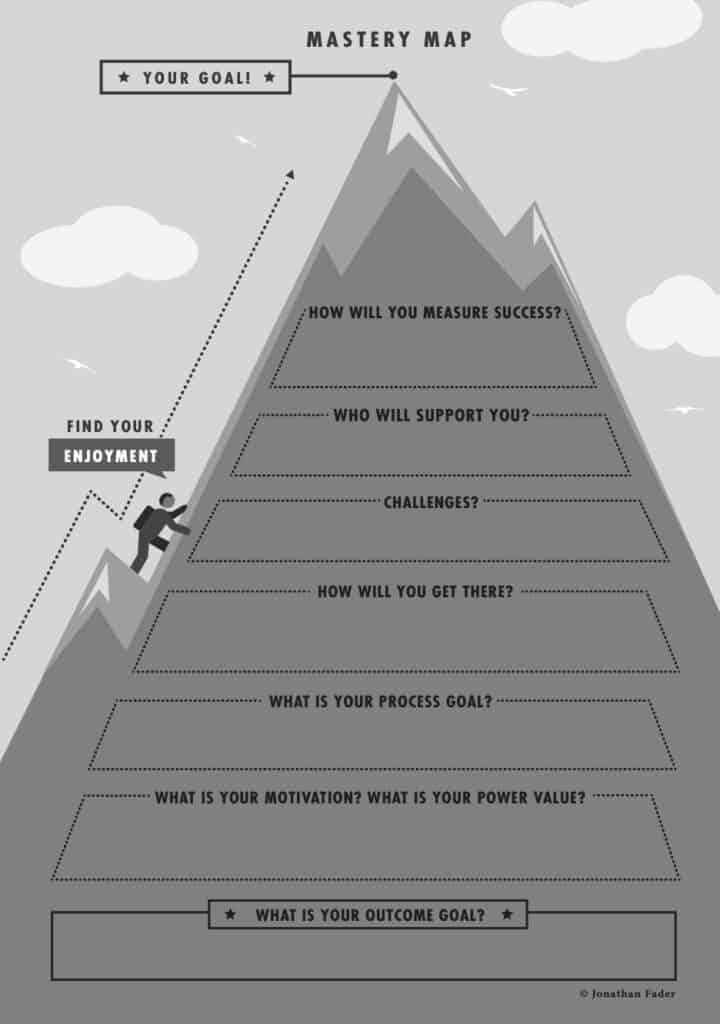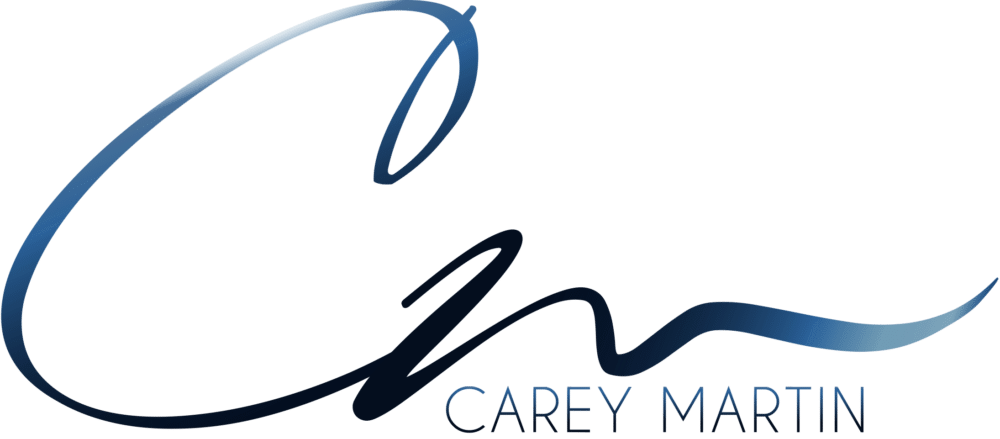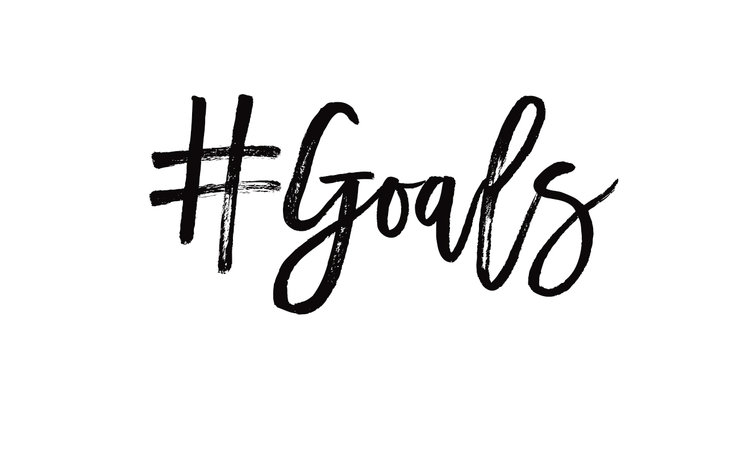Motivation and goals go hand in hand, no question there. Goals, goals, goals, they seem to be everywhere and there are infinite ways to think of them, to construct them, and to list and define them.
This is Part Two of Three in answering the questions of what drives and motivates me to keep going.
I’m a highly goal-driven person so I love these types of questions. There are seemingly infinite constructs for formulating goals, but because I’ve mentioned two specific tools in previous posts, I’m going to use only those two today. They come from these two books:
The Art of Impossible, A Peak Performance Primer by Steven Kotler
and
Life As Sport, What Top Athletes Can Teach You About How To Win In Life by Jonathan Fader, PhD.
Kotler breaks goals down into three parts:
- Massively Transformative Purpose (MTP)
- High, Hard Goals (HHGs)
- Clear-Goals
I like this formula because it is a vertical construct that works where others fail. It is a chunking down from Impossible to the day-to-day steps.
Here’s how it works:
1. Define your MTP.
What am I passionate about, believe in wholeheartedly, aligns with my values, and has never been done before? What would make an impact?
One of mine as an example for this entire post – Advance hip dysplasia awareness and create better patient connections, experiences, and outcomes.
Why is this important to me? I’m grateful for the gift of healing I have been given and connection with my BFF, my healing partner, but it isn’t enough to simply receive it. Yay, me and yay, her, but what about everyone else? What if I could help create better positive connections of support for everyone? What if I could create a tribe?
2. Break it down into HHGs.
What major steps need to happen in order to accomplish my MTP?
For me, this part has two tracks – Personal and Physical.
Personal:
- Write this blog
- Write a book
- Speak
- Research
- Partner
Physical:
- Finish surgeries
- Fully recover
- Rebuild, transform, compete
- Be physical example of what is possible
3. Break the HHGs down into daily, actionable Clear-Goals.
This is basically a to-do list of what I need to do each day in order to achieve the goals listed above. These are totally doable, not too difficult but not too easy, focused steps that over time will yield the results I want. Notice that this is a PROACTIVE to-do list versus REACTIVE.
This how it looks right now based on the stage I am in:
Personal:
- Write every day
- Post on blog every day
- Read relevant books
- Research and connect
Physical:
- Work through my recovery
- Do the rehab exercises
- Do my program (modified for now) from my coach – gym and nutrition
THAT’S IT!
I have focus, direction, and purpose with this formula. It gets me up and moving every single morning, excited to do the work, always with my eyes on my ultimate MTP.
And the driver of that MTP?
…GRATITUDE FOR THE GIFT
That’s the model from The Art of Impossible.
Next, let’s look at the Mastery Map from Life As Sport. I mentioned it in my post titled “Think Again”. I use this alongside Kotler’s model to further define the elements and challenges. Since my HHGs have two tracks – Personal and Physical – I did this map separately for each.
(You can download this map here.)

Personal Mastery Map
Outcome Goal – Advance hip dysplasia awareness and create better networking for support and positive outcomes. (My MTP)
Motivation/Power Value – To honor the gift I’ve been given with my surgeries, share my story, set new examples and standards for what is possible. Empower others to rise to new levels. This isn’t about being an outlier; anyone can do this and more. To bring awareness and change the script for future generations.
Process Goal – Work my plan but also roll with the inevitable challenges. Create and follow the smaller goals that will make the outcome possible. (HHGs and Clear-Goals)
How Will I Get There? – Write, share, read, research, make connections with other influencers. Continue my own personal development work, using all of my tools. Rely on my team of supporters.
Challenges – Getting my blog out there, reaching far enough. Finding and making the connections I need. I have never done this before.
Who Will Support You? – Family, friends, readers, hip dysplasia community. There is no negative support here, no controversy, nobody to say “no, we want to keep hip dysplasia surgery and recoveries scary and hard and lonely, stop what you are doing.”
How Will You Measure Success? – When potential patents are able to find a positive network of support. When surgery recoveries are easier as a result.
Physical Mastery Map
Outcome Goal – Full return to running and bodybuilding, compete at pro level.
Motivation/Power Value – To honor the gift I’ve been given with my surgeries, rebuild to my best self, far better than ever in my life. To set an example for others in my situation that they can do anything they want afterwards.
Process Goal – Work my plan but also roll with the inevitable challenges. Create and follow the smaller goals that will make the outcome possible.
How Will I Get There? – Work the steps of my rehab work, train every day following my plan, stick to the meal plan, sleep, meditate, use all of my tools. Rely on my team of supporters.
Challenges – Surgeries not working as planned, needing more surgeries, body needing extra work to rebalance and rebuild after so much work, scars.
Who Will Support You? – Dr. and his team, family, friends. I have direct email and text connection to my dr and team which gives me the most comfort of all. BFF to do this with is also critical. There is no negative support here.
How Will You Measure Success? – When pain is all gone. When I have full strength and symmetry. When I have excellent and pain free ROM. When I can train at full capacity. When I can run my fastest/longest and lift and grow the most I ever have.
What I like about the Mastery Map is the identifying of challenges, supporters, and the visual of how they all stack together. I also like the visual of enjoyment driving the whole thing upwards. On mine, of course, I wrote GRATITUDE FOR THE GIFT.
So there it is, a deeper look into how I use goals as motivators. So far I have covered drive and goals as motivators. Next up is Grit!
If you have landed on this page from an external link, please go HERE to read from the beginning. Otherwise, click on the next title below to continue.


Leave a Reply
You must be logged in to post a comment.